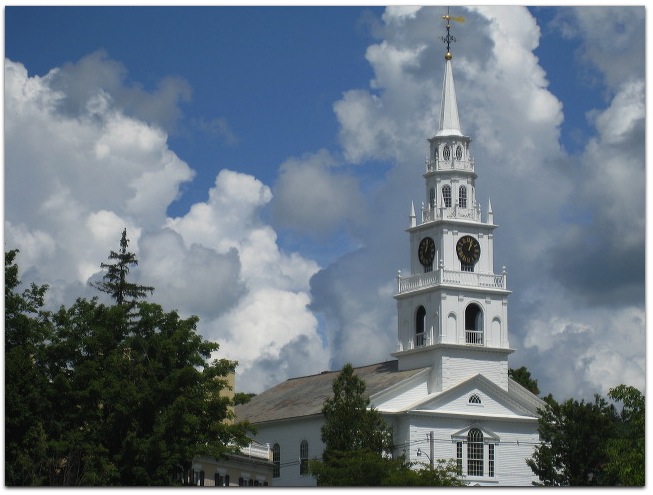I grew up in New Jersey, which I think of as “New England without the universities”. There are many places in New Jersey with beauty equal to, say, New Hampshire’s. But New Jersey never had the same ethos of preservation, the same not-quite-a-mythology that explains why Norman Rockwell and his sentiments fit New England like a shoe while to the rest of the country they remain a maudlin approximation of bygone times elsewhere.
I transferred my state citizenship from New Jersey to North Carolina in early 1974, when I left our small rented house on Route 94 in Yellow Frame, out in Sussex County, the beautiful northernmost county of the state. Back then Sussex County had more cows than people, and featured fall colors and pastoral scenes worthy of calendars and post cards. Best of all it shared the Delaware River with Pennsylvania. The shores of the river were settled first by the Lenni Lenape Indians and later by the Dutch, descendents of which continued to farm the islands and lowlands alongside the river, right up to the point in the 1970s when the United States government, with help from both states, condemned the land, including perfectly good towns such as Dingman’s Ferry, and let it all fall to ruin while fighting and failing to build the unnecessary Tocks Island Dam Project. It was, and remains, a disgrace.
Can you imagine the feds, or Vermont and New Hampshire, doing the same to the Connecticut River? Of course not. We’re talking about New England here.
The difference was brought home to me this past weekend when we picked up The Kid from camp in Vermont and took our time heading back to Boston. We visited Middlebury, Waterbury (including the Ben & Jerry’s Ice Cream headquarters), the Rock of Ages Quarry near Barre, and various towns along the Connecticut River before having some okay Thai food in Keene. New England is truly a beautiful region, even with almost no available hotel rooms.
Much of that was recorded photographically. Here’s the set. Here’s the slide show.
Nice to know New England is there. Less nice to know that much of the same beauty has long since been paved or otherwise profaned in other states. (Of course, I also realize that much has been lost in New England as well. Just less of it than elsewhere.)
The shot above is of the Congregational Church in Middlebury, Vermont. I shot a series of photos of the church, most with white and grey clouds boiling up in the sky beyond. I wasn’t sure which was best (which is why I kept them all), but I am sure that several are better than the one the church uses for its own website.
I also did some experimental shooting with this brick building in downtown Middlebury, which is about as nice a little college town as you’re gonna find anywhere. The best of those shots, by the way, were taken not with my Canon 30D SLR, but with a little Canon Powershot SD850is. Partly that’s because the little camera likes to yield more vibrant colors than the big one; and partly it’s because the big one wasn’t fixed right and read the light wrong.
Anyway, I’m back out in California, where I am now a citizen, even though most of the next year will be spent back at the Berkman Center in Cambridge.

Leave a Reply